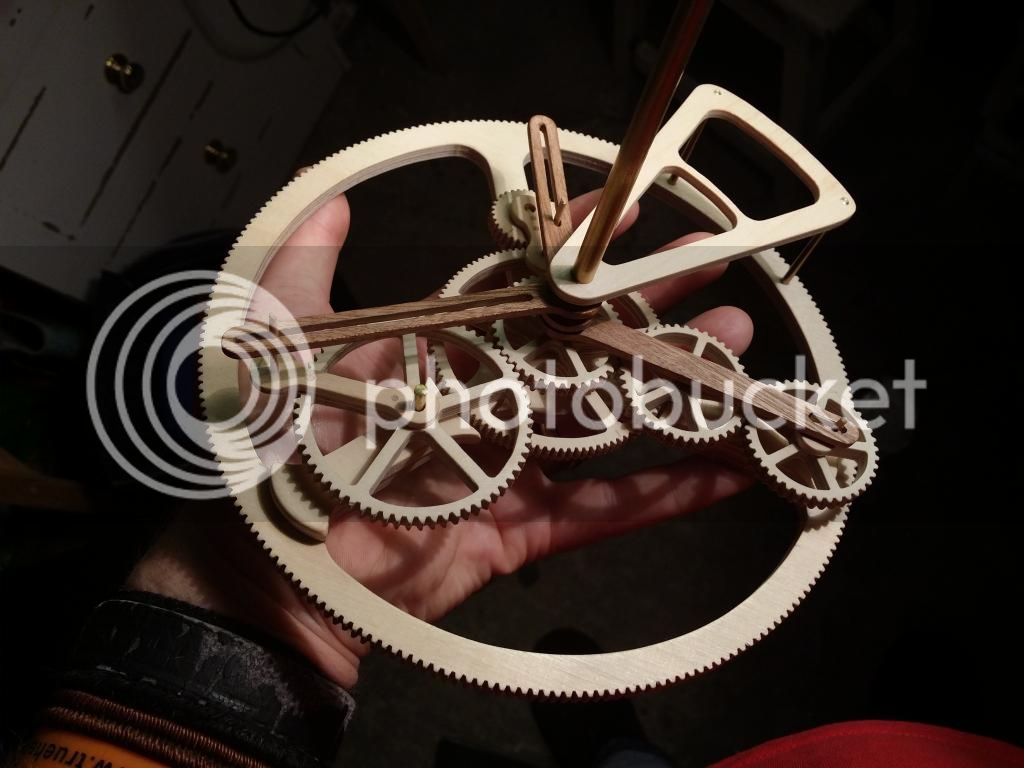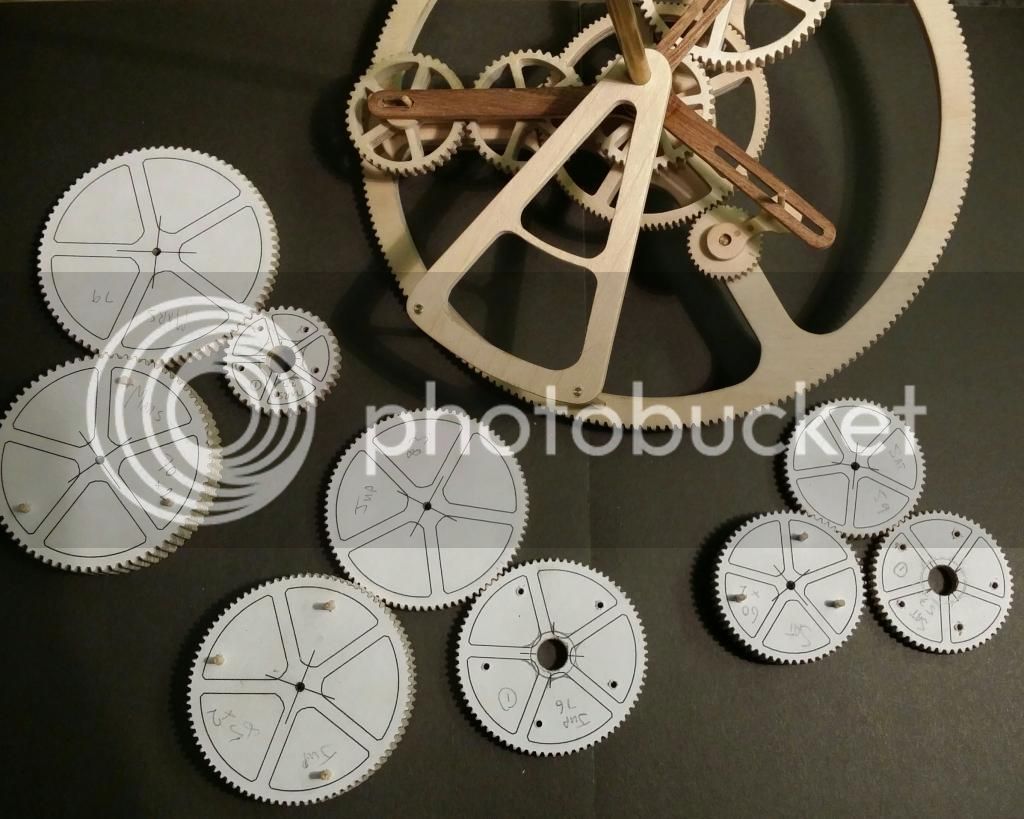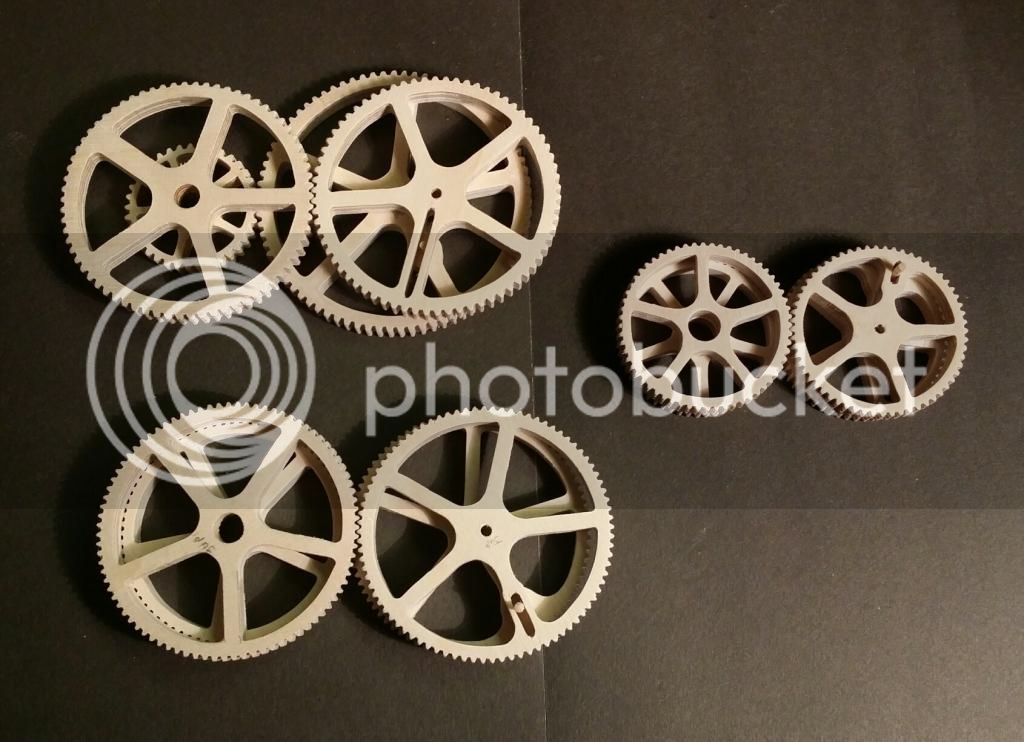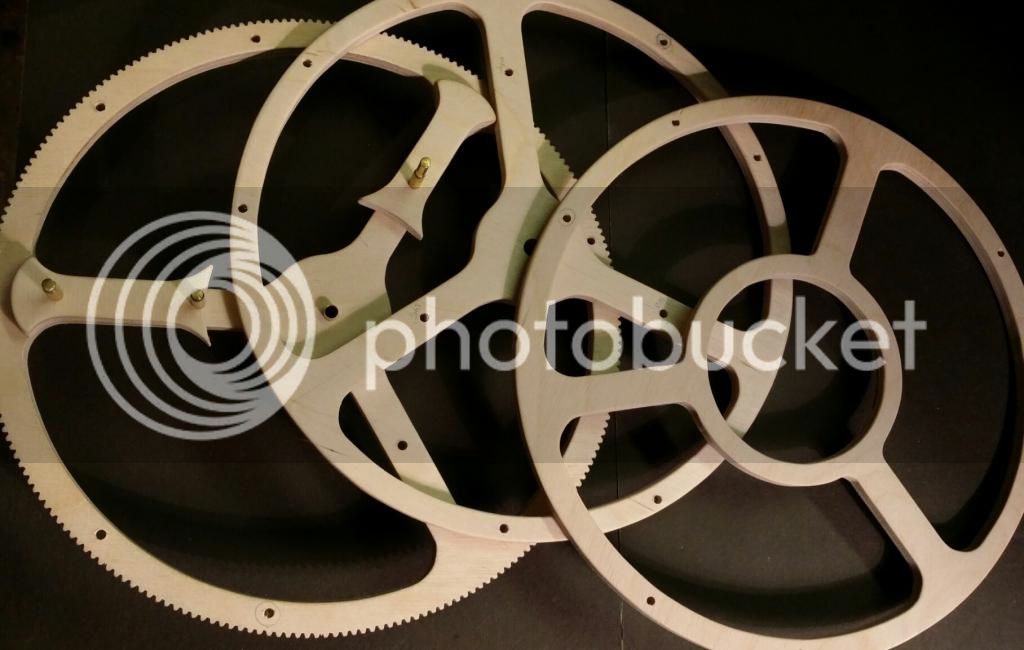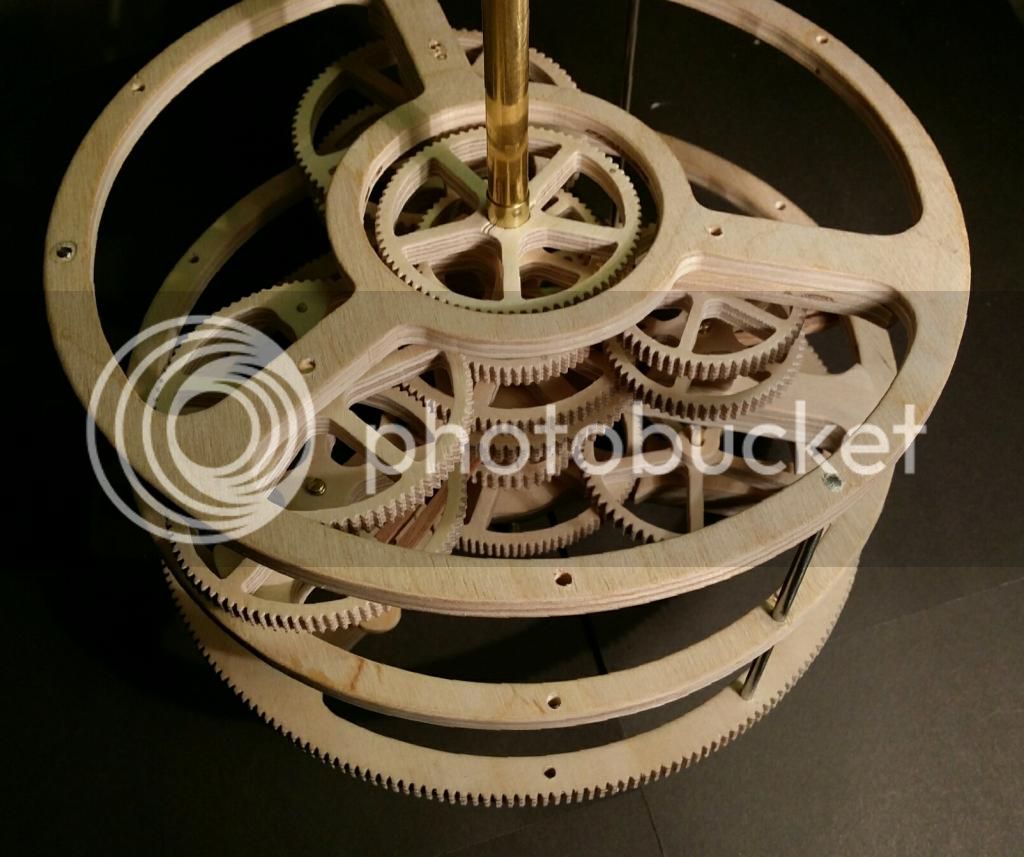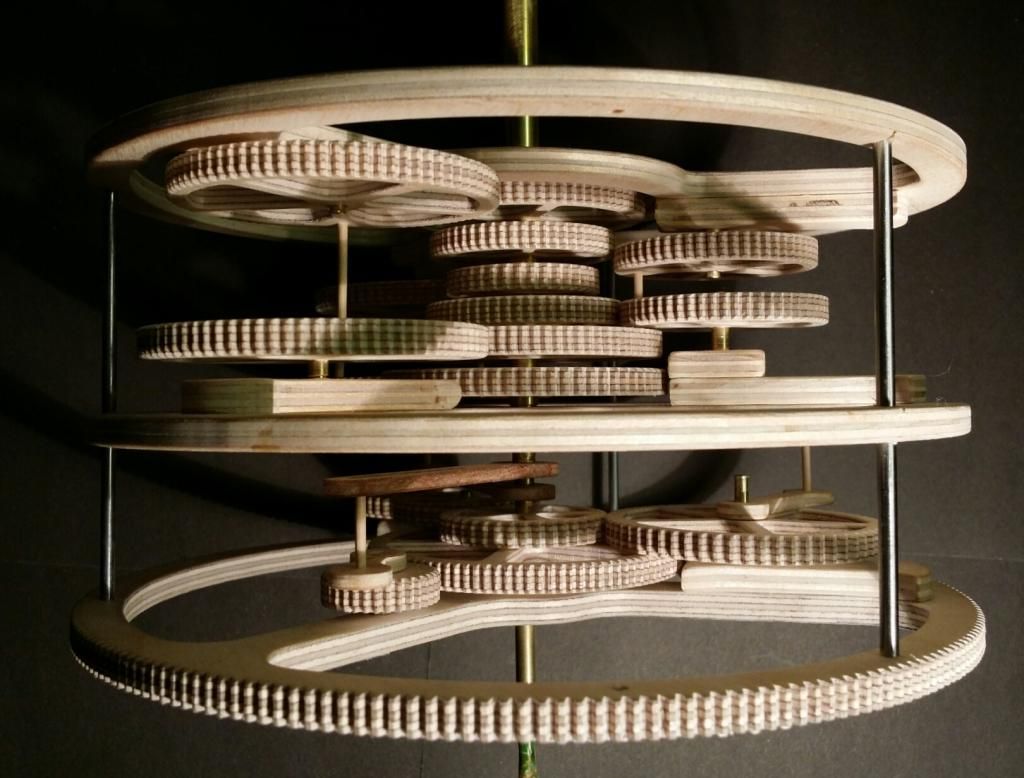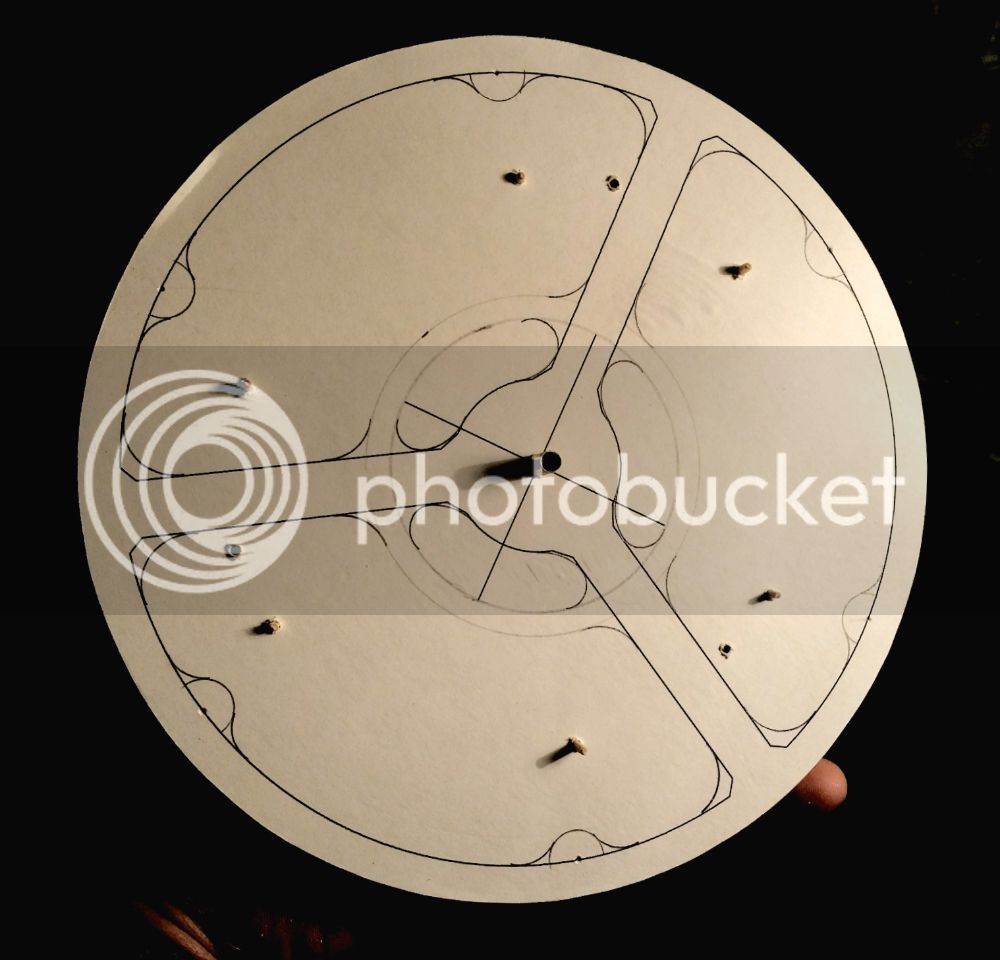Mechanism Man
Established Member
I'm sure that most of you good folks here have far better things to be doing than worrying about ancient Greek artifacts, and not many of you will be particularly familiar with the Antikythera Mechanism, and that's if you've ever heard of it at all.
So, for those not sad and lonely enough to know what I'm talking about, or for those that only have a vague recollection of this incredible device, it was, in a nutshell, a machine the size of a shoe box discovered 114 years ago in a 2100 year old Greek ship wreck that could accurately predict where in the heavens to look for all the major heavenly bodies known at the time. It included the apparent backward movement in the night sky - retrograde motion - for all the planets (the machine represents what can be seen looking out from Earth, rather than being a birds eye view of the galaxy like a traditional orrery), and it even went as far as showing the apparent speeding up and slowing down of the Moon's orbit. It's predictions were depicted on both sides of the box by pointers for the five known planets of the time (and of course the Sun and moon), and with time being measured on the opposite side with a spiral scale that spanned 235 months, after which time the pointer on this scale would have to be reset to month one again. Other pointers predicted likely eclipses, moon phases and measures of time. All this pre-dated the first gear driven clock by over 1000 years. Put simply, it was an incredible feat of engineering for it's time.
So why am I rambling on about it you may ask? Well after building many orreries over the past few years - all with scroll saw cut wooden gearing - I've finally got around to having a go at building one of these amazing machines myself, and again, it's being built with hand cut wooden gears. All the gearing has been worked out by minds far greater than mine, so with a little luck I shouldn't encounter too many problems, but if I pull it off I'll be the first person to actually physically build one of these devices with all the latest thinking rather than just computer model it for 2000 years - so I really hope that it works!
I'm not sure if anybody here will be particularly interested, but I thought I'd share my efforts anyhow, just in case.
I'll attach a photo or two tomorrow.
Dave.
So, for those not sad and lonely enough to know what I'm talking about, or for those that only have a vague recollection of this incredible device, it was, in a nutshell, a machine the size of a shoe box discovered 114 years ago in a 2100 year old Greek ship wreck that could accurately predict where in the heavens to look for all the major heavenly bodies known at the time. It included the apparent backward movement in the night sky - retrograde motion - for all the planets (the machine represents what can be seen looking out from Earth, rather than being a birds eye view of the galaxy like a traditional orrery), and it even went as far as showing the apparent speeding up and slowing down of the Moon's orbit. It's predictions were depicted on both sides of the box by pointers for the five known planets of the time (and of course the Sun and moon), and with time being measured on the opposite side with a spiral scale that spanned 235 months, after which time the pointer on this scale would have to be reset to month one again. Other pointers predicted likely eclipses, moon phases and measures of time. All this pre-dated the first gear driven clock by over 1000 years. Put simply, it was an incredible feat of engineering for it's time.
So why am I rambling on about it you may ask? Well after building many orreries over the past few years - all with scroll saw cut wooden gearing - I've finally got around to having a go at building one of these amazing machines myself, and again, it's being built with hand cut wooden gears. All the gearing has been worked out by minds far greater than mine, so with a little luck I shouldn't encounter too many problems, but if I pull it off I'll be the first person to actually physically build one of these devices with all the latest thinking rather than just computer model it for 2000 years - so I really hope that it works!
I'm not sure if anybody here will be particularly interested, but I thought I'd share my efforts anyhow, just in case.
I'll attach a photo or two tomorrow.
Dave.


































